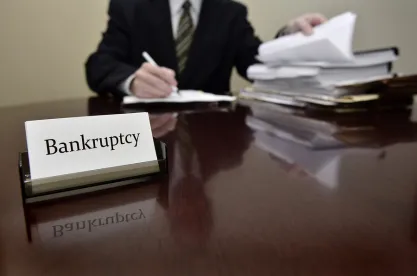The bankruptcy trustee is charged with the administration of all bankruptcy cases to which she or he is elected or appointed to serve. The duties of the trustee are generally two-fold: 1. Administer the debtor’s assets; and 2. Investigate the financial affairs of the debtor. In a typical liquidation case — most all chapter 7 cases — the cash resulting from the sale of the assets or recoveries from clawback claims is distributed to creditors after the payment of the cost of administering the case. To enable the trustee to efficiently administer the assets, the bankruptcy law confers broad powers upon the trustee.
As a creditor you should be aware of the trustee’s role, powers and how the trustee can affect your rights.
The Trustee’s Role
In chapter 7 consumer and business cases an interim or temporary trustee is selected from a panel of trustees who are appointed by the Office of the United States Trustee, which is a division of the United States Department of Justice. Individuals selected to serve on the panel are usually local lawyers or accountants who are experienced in the field of bankruptcy law or finance. But any unsecured creditor with a valid and fixed claim who is not an insider of the debtor and who does not have a substantial conflict of interest with other creditors may seek an election of a different person to perform the duties of the trustee in place of the interim trustee. In chapter 13 cases there is usually a single individual who serves as a standing trustee to administer all the cases in the particular jurisdiction. Chapter 11 cases often don’t have a trustee unless a party to the case requests that one be appointed, and the judge agrees and directs that a trustee be appointed.
In all cases the bankruptcy trustee is a fiduciary and representative of the bankruptcy estate which is created upon the filing of a bankruptcy case. The bankruptcy estate consists of virtually all the assets of the debtor as of the date the cases were filed. It is the trustee's responsibility to maximize the assets available for liquidation and distribution to the creditors.
Once appointed, the trustee will make a preliminary determination as to whether there will be assets available for distribution to creditors. The trustee will review the debtor’s bankruptcy filings to assist with that determination. The next step is for the trustee to inquire of the debtor as to the information listed in the bankruptcy filings and about his or her assets and liabilities. This inquiry is conducted at the Section 341 meeting, sometimes called the “first meeting of creditors.” The Section 341 meeting is also the first opportunity that creditors will have to question the debtor under oath.
The Trustee’s Powers
Creditors should be aware that the bankruptcy trustee has significant legal powers. In addition to the responsibility to sell the debtor’s non-exempt property, the most significant powers of the trustee are explained below.
Avoidance Powers
Perhaps the most feared power that the trustee holds is the power to avoid – or reverse - transfers made by the debtor before the bankruptcy case was filed, also known as clawback claims. The trustee may also seek a court order through litigation to avoid a mortgage or other security interest which has not been perfected as of the date the bankruptcy was filed. Likewise, the trustee can avoid a sale of real estate if the deed was not properly recorded prepetition.
The avoidance power most employed is the avoidance of preferential transfers. A preferential transfer is one which occurs while the debtor is insolvent and which is made within 90 days prior to the bankruptcy filing to a creditor on account of a pre-existing debt or the granting of a security interest to a previously unsecured creditor. Sometimes longer periods apply especially when the transfer was made to someone close to the debtor such as a relative or other “insider.” Of course, there are exceptions and defenses to preference actions which can be asserted in appropriate cases.
Trustees also possess the power to seek the avoidance, or reversal, of a fraudulent transfer. These can be transfers made where the debtor defrauded creditors in connection with the transfer or simply did not receive a reasonably equivalent value for the property transferred. The latter basis is called a constructive fraudulent transfer. Note that these cases can be very fact specific.
Abandonment
The trustee may abandon property which is burdensome or of inconsequential value to the bankruptcy estate. For example, the trustee is likely to abandon property encumbered by liens where there is no equity. In cases where estate property is collateral for a loan, lenders most often would welcome an abandonment, which would then allow the lender/creditor to sell the collateral to recover repayment on the loan. Secured creditors should make every effort to communicate with the trustee prior to the Section 341 meeting and obtain the trustee’s consent to abandon the collateral in these cases at the early stage of the case. This can often be accomplished without the assistance of counsel and without going to court if the trustee is satisfied that the creditor holds a valid security interest and there is reliable valuation of the collateral.
Working with The Trustee
Creditors can often be of assistance to the trustee and vice-versa. Creditors can help in locating assets for liquidation and distribution to the general creditor body. For example, creditors often have financial statements in their files which disclose assets or sources of income that the debtor failed to disclose on his bankruptcy papers. The objectives of the trustee and general unsecured creditors are usually the same and the sharing of information can be mutually beneficial. Most trustees are willing to provide information regarding both the specifics of the case as well as the status of the trustee’s efforts to administer the case.
Compensation of the Trustee
Trustees are paid on commission. The more money the trustee is able to pay to creditors, the higher the commission.
The trustee commission schedule is set forth as follows in section 326 (a) of the bankruptcy code:
In a case under chapter 7 or 11, other than a case under subchapter V of chapter 11, the court may allow reasonable compensation under section 330 of this title of the trustee for the trustee’s services, payable after the trustee renders such services, not to exceed 25 percent on the first $5,000 or less, 10 percent on any amount in excess of $5,000 but not in excess of $50,000, 5 percent on any amount in excess of $50,000 but not in excess of $1,000,000, and reasonable compensation not to exceed 3 percent of such moneys in excess of $1,000,000, upon all moneys disbursed or turned over in the case by the trustee to parties in interest, excluding the debtor, but including holders of secured claims.




 />i
/>i
